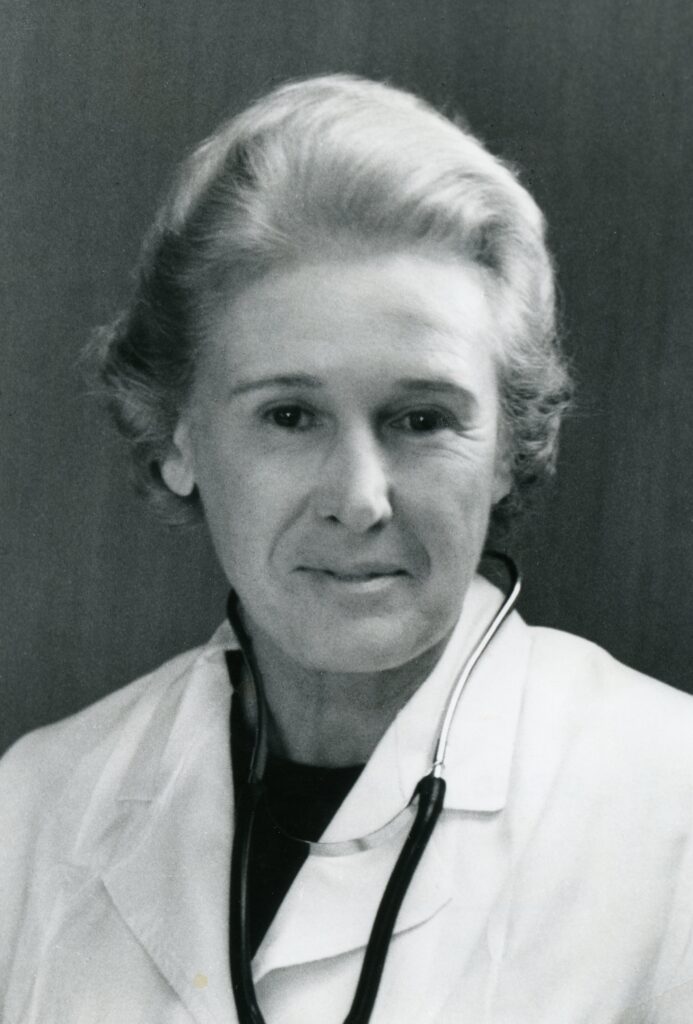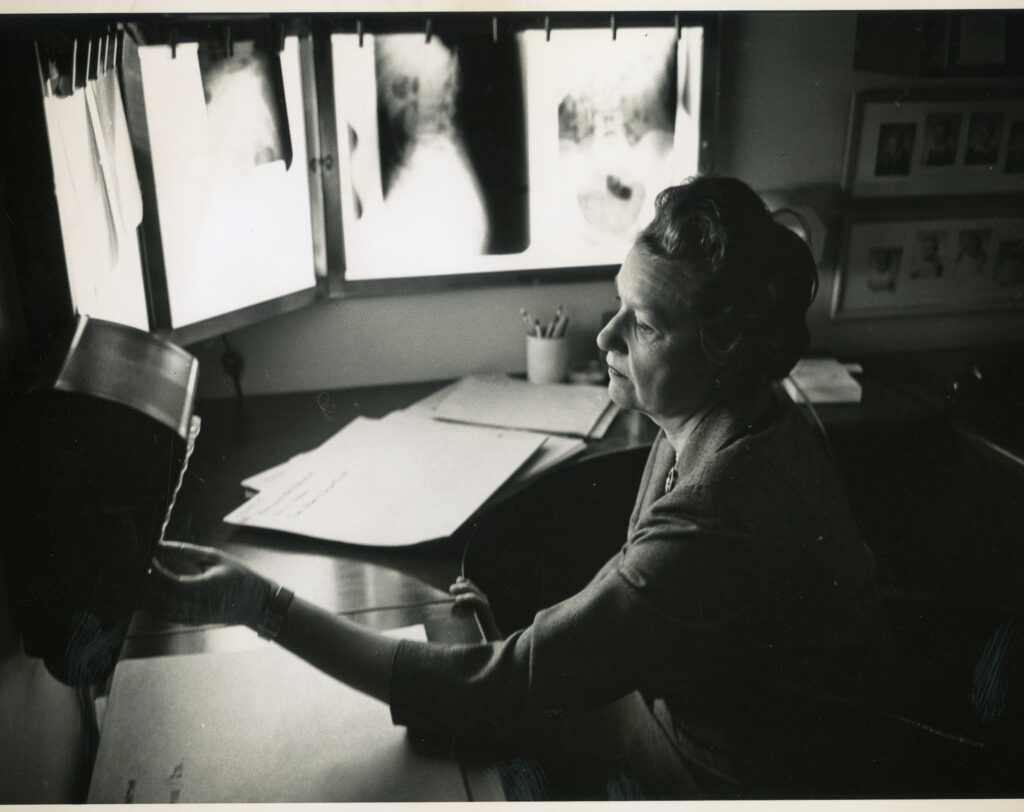By Heather Gardiner
“A new method of detecting cancer of the breast has recently been adopted. This involves the use of ‘soft’ x-rays to take a picture, called a mammogram.”
Dr. Henrietta Banting, explaining a new diagnostic tool in use at WCH’s Cancer Detection Clinic, 1964

This year marks the 55th anniversary of the publication of one of Canada’s first research studies on mammography conducted at Women’s College Hospital (WCH) by two of its renowned physicians – Dr. Henrietta Banting and Dr. Elizabeth Forbes.
Dr. Banting joined the staff of WCH in 1957 after earning a master’s degree in medical research and then a medical degree at the University of Toronto. In 1958, she was appointed as the Director of WCH’s Cancer Detection Clinic for women. In her role, Dr. Banting often worked alongside Dr. Forbes, WCH’s Head of Radiology. Dr. Forbes had joined the staff of WCH in 1955 after completing a Fellowship in Radiology at the Cleveland Clinic and then a residency at the Strong Memorial Hospital in New York.
At WCH, both doctors witnessed first-hand the alarming rate of breast cancer among their patients. They recognized that innovations were needed to detect and diagnose breast cancer earlier. The earlier cancer was detected and treated, the better the outcome would be for the patient.
Working together, they theorized that mammography could be a useful tool in the early detection of breast cancer. Before the 1960s, mammography was generally not used in Canada to diagnose breast cancer as there was little research at the time to support the use of mammography for this purpose. Clinicians, instead, primarily relied on physical examination to make their diagnosis.

Records in the Archives show that Dr. Forbes first presented their idea of exploring mammography to the hospital’s research committee in January 1963. Only two months later, planning and the acquisition of funding for the pilot project was underway.
The clinical study was launched out of the Cancer Detection Clinic in March 1963. Over the next two years, more than 1,400 women took part in the study and were screened for breast cancer using mammography. Funding for the pilot project was granted by the Ontario Cancer Treatment and Research Foundation (later known as Cancer Care Ontario). This Foundation already had a well-established relationship with WCH that began in the mid-1940s. It was responsible for helping to fund early women’s cancer research studies at WCH and its Cancer Detection Clinic.
In 1967, Dr. Banting and Dr. Forbes presented the result of their clinical study in an article entitled “An Assessment of Mammography” in the Journal of the Canadian Association of Radiologists. It was one of the first Canadian studies on mammography to be published. Their study proved that mammography was a valuable diagnostic tool when used alongside physical examinations to detect breast cancer.
As they explained “It can no longer be denied, however, that mammography is a very useful adjunct in selected cases. It has its place, not only in the search for early carcinoma, but also in the reassurance of both clinician and patient in the multitude of cases of mammary dysplasia [changes in breast tissue that are benign] …. A review of 1436 mammographic examinations has revealed that this is a worthwhile aid.”
With this study, WCH became the first hospital in Ontario to use mammography as a routine diagnostic tool to detect breast cancer. The work of Dr. Banting and Dr. Forbes influenced a new standard for women’s cancer screening in Canada. This Breast Cancer Awareness Month we celebrate Dr. Henrietta Banting, Dr. Elizabeth Forbes, and all medical researchers who have devoted their careers to the study of breast cancer at WCH.